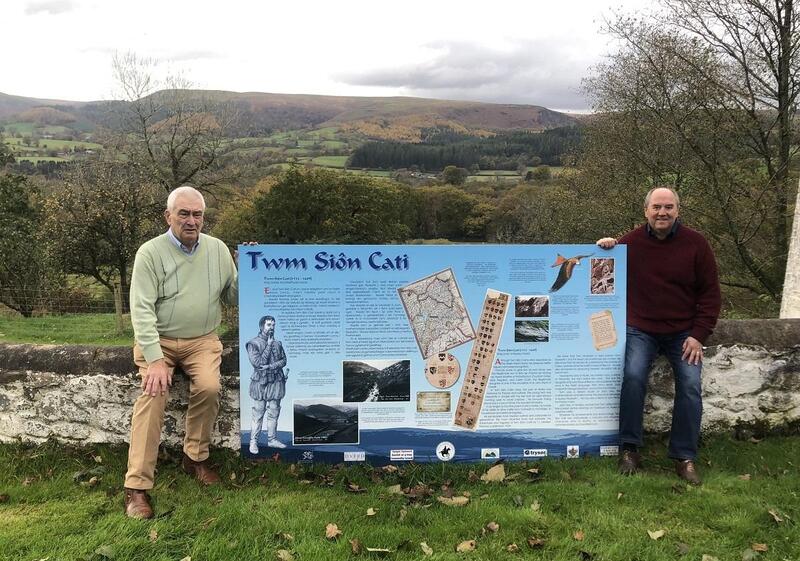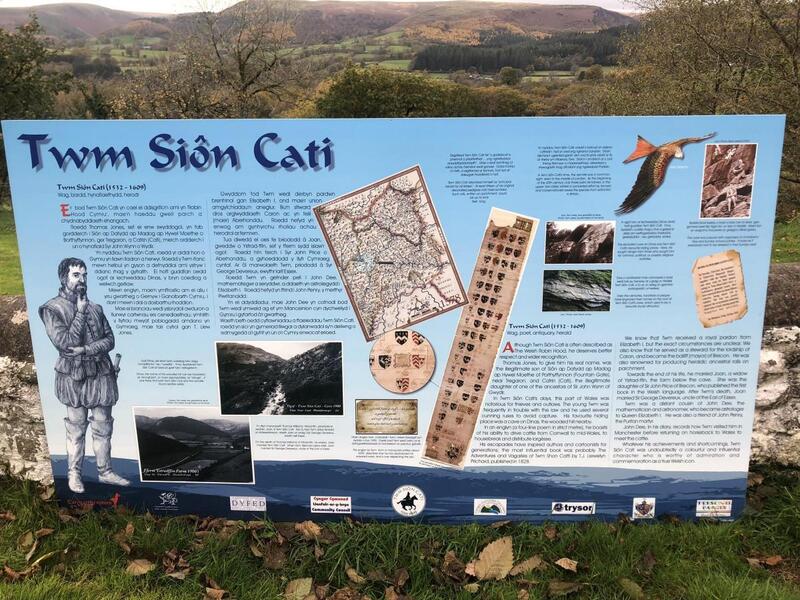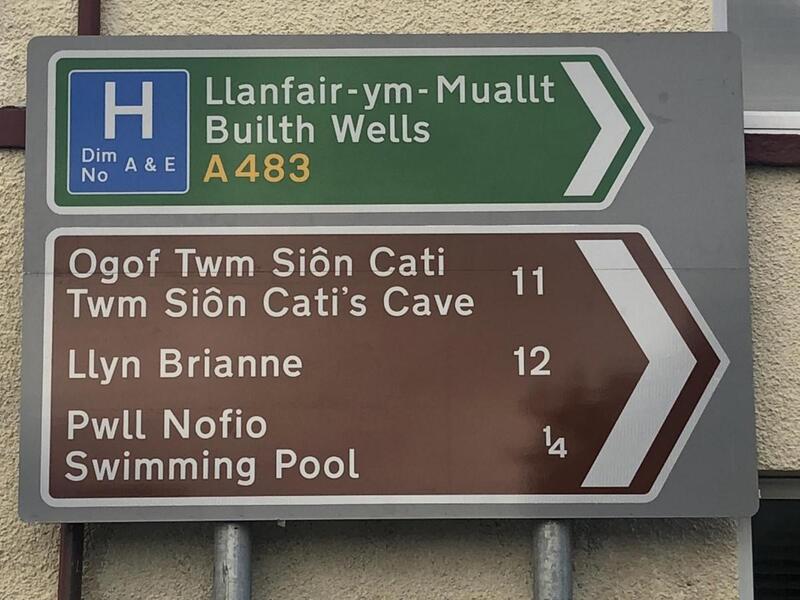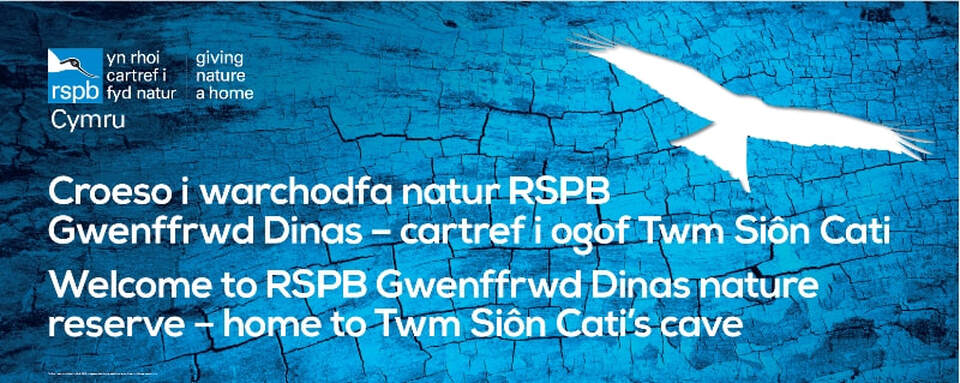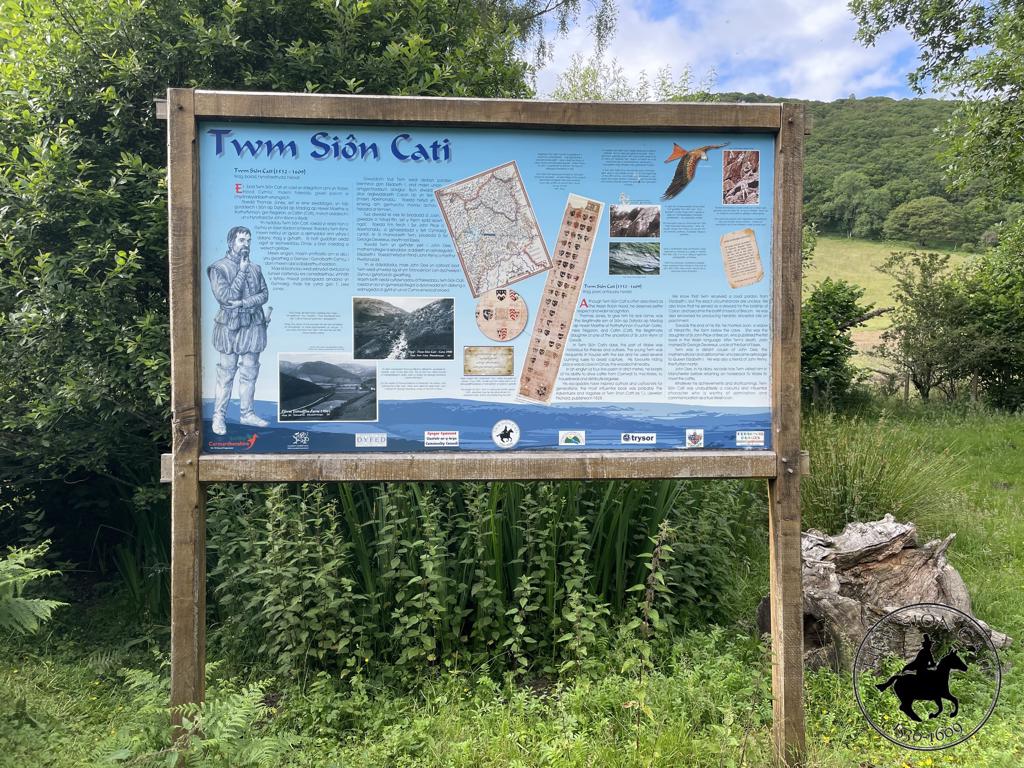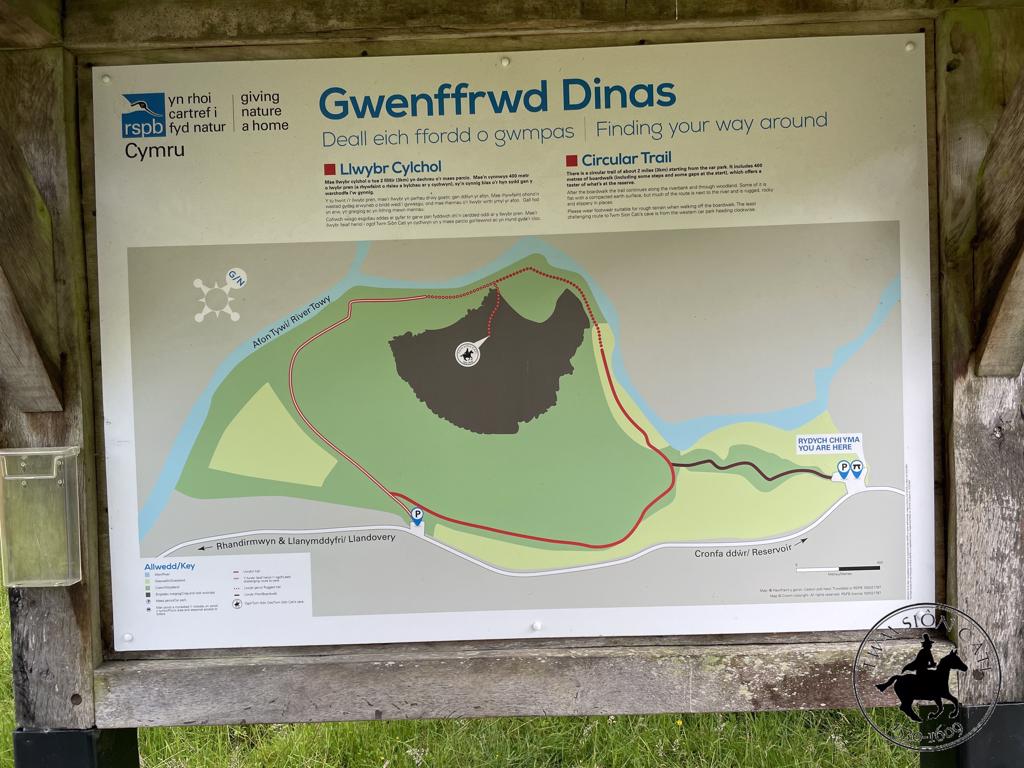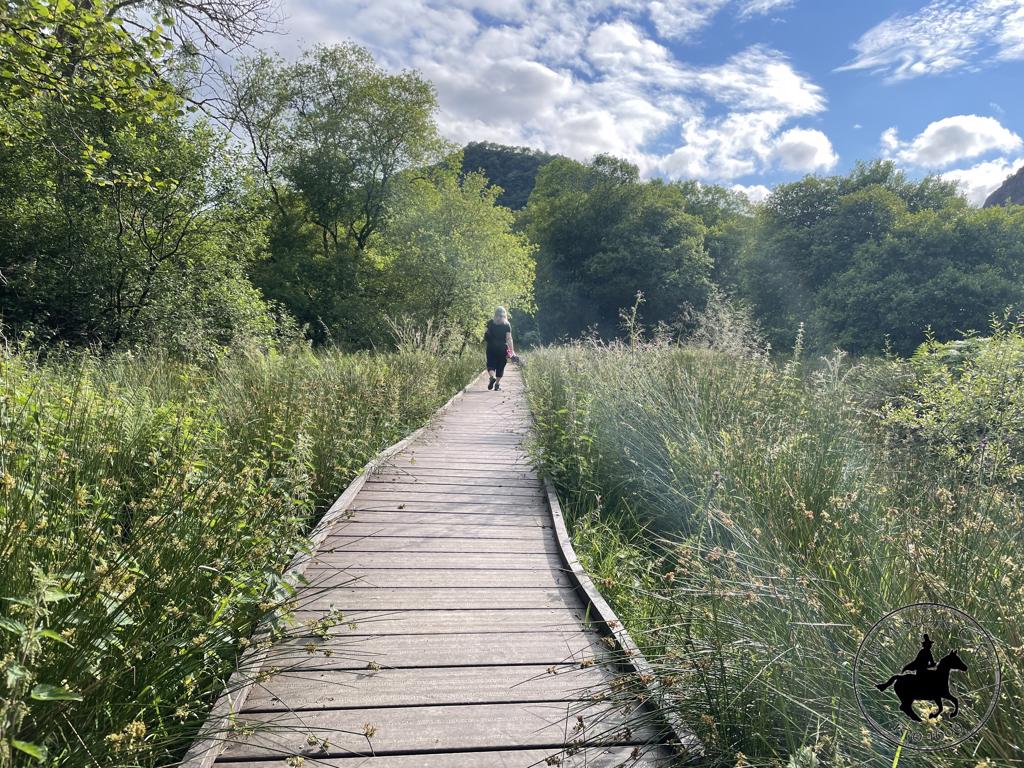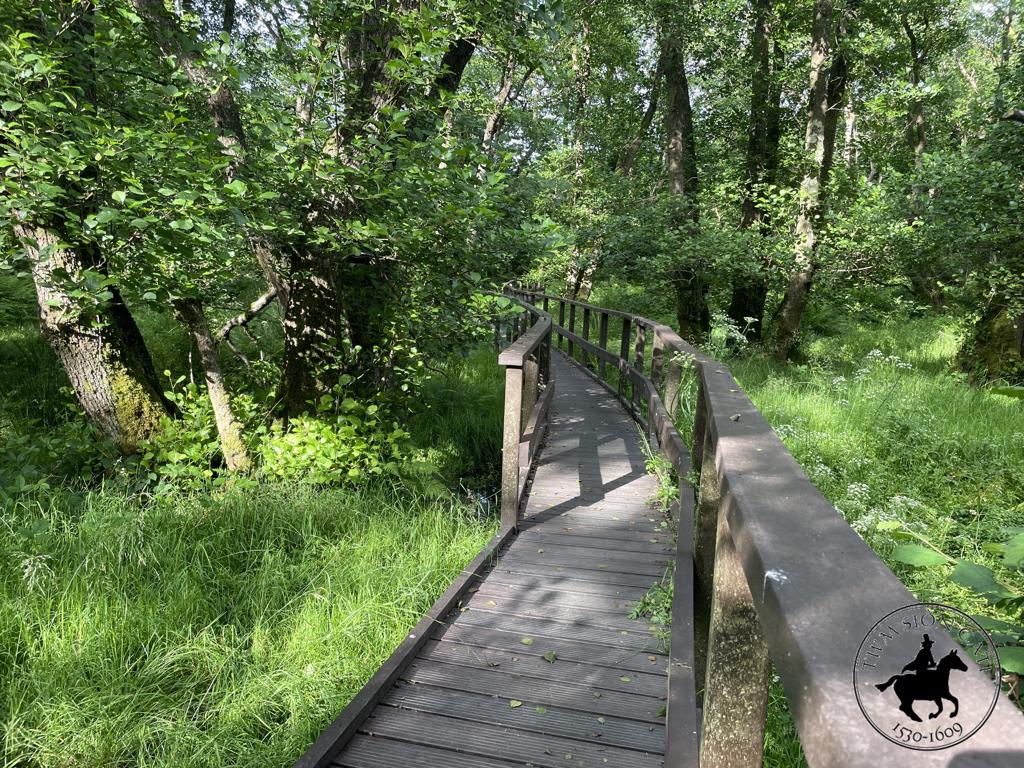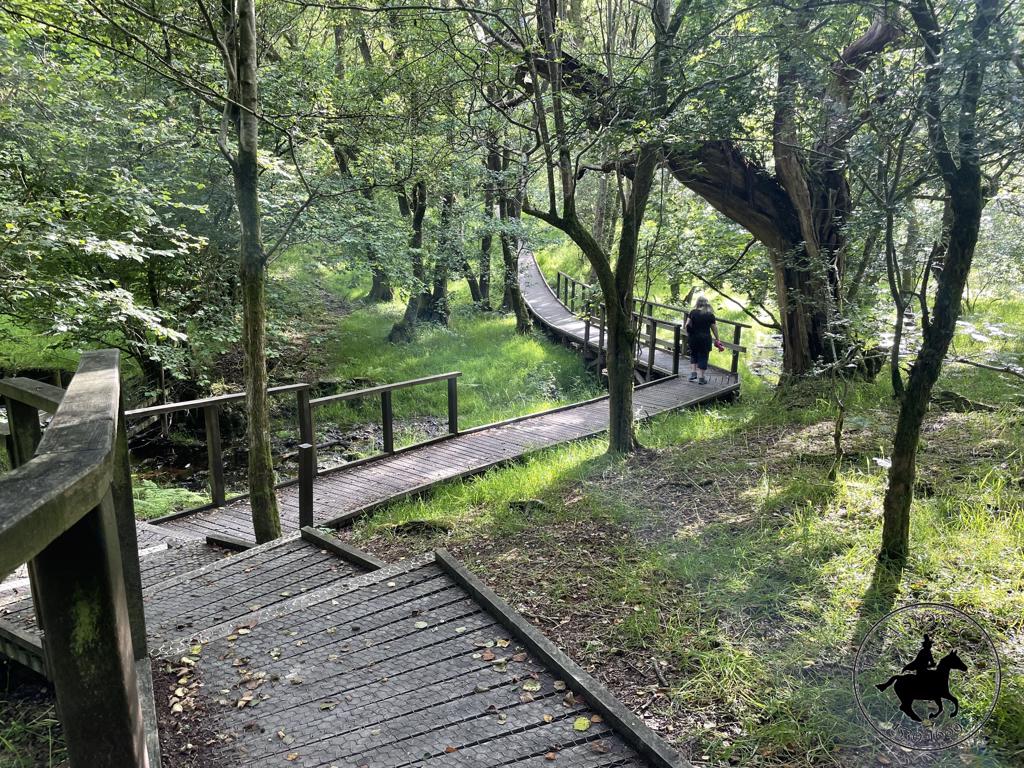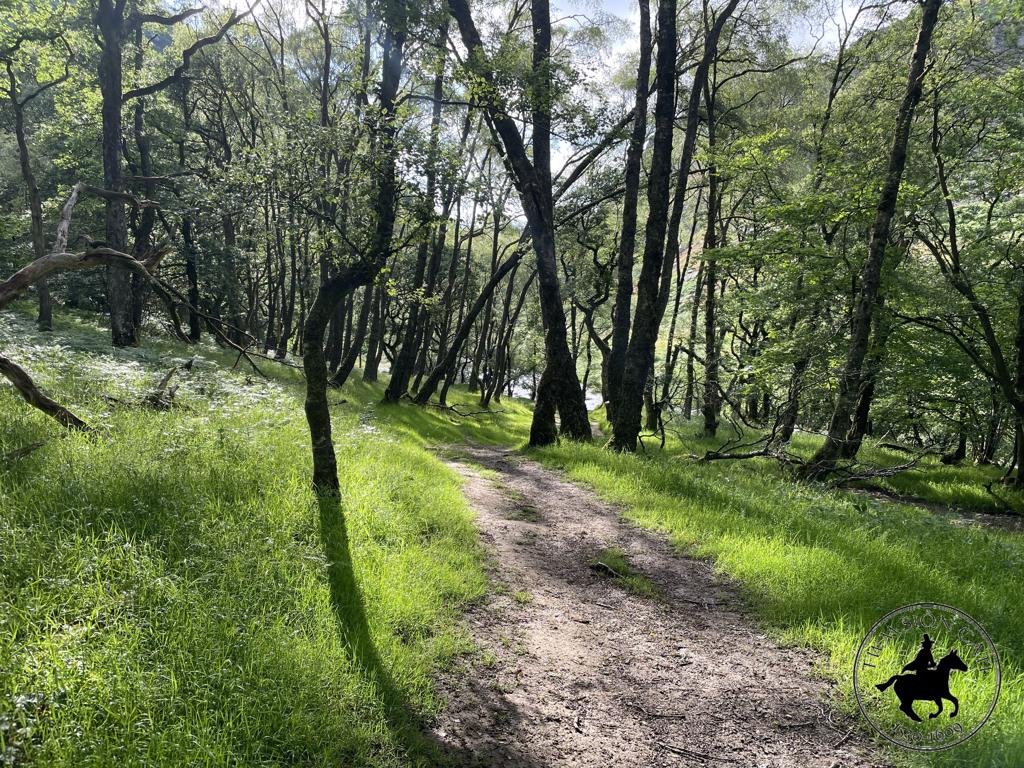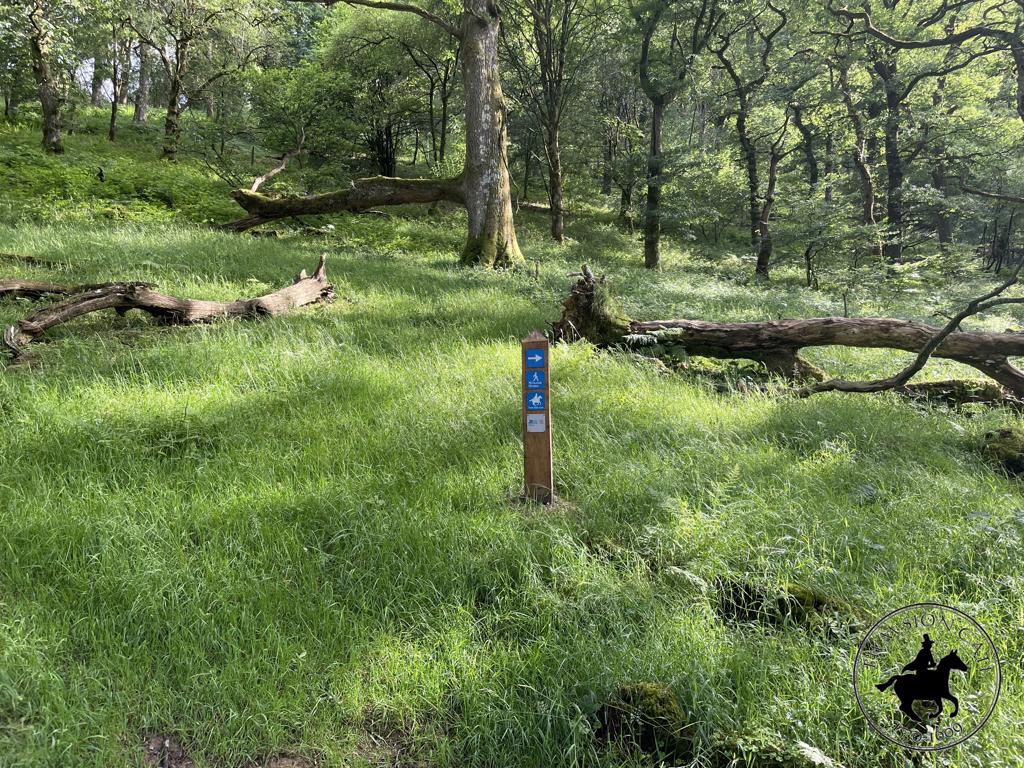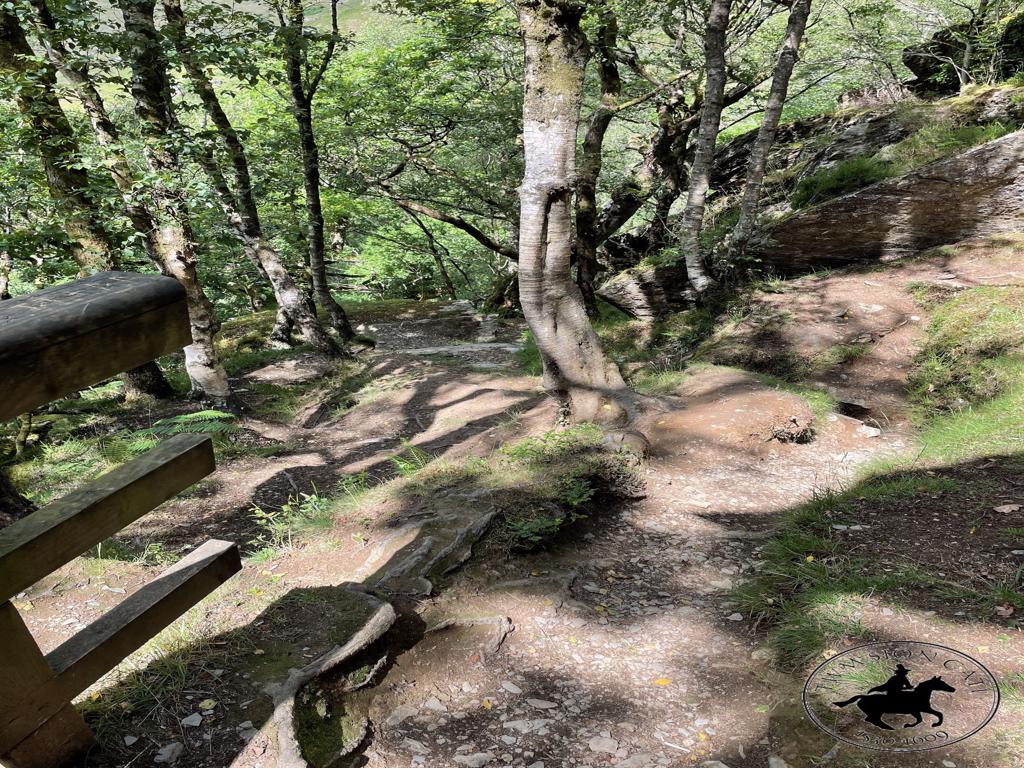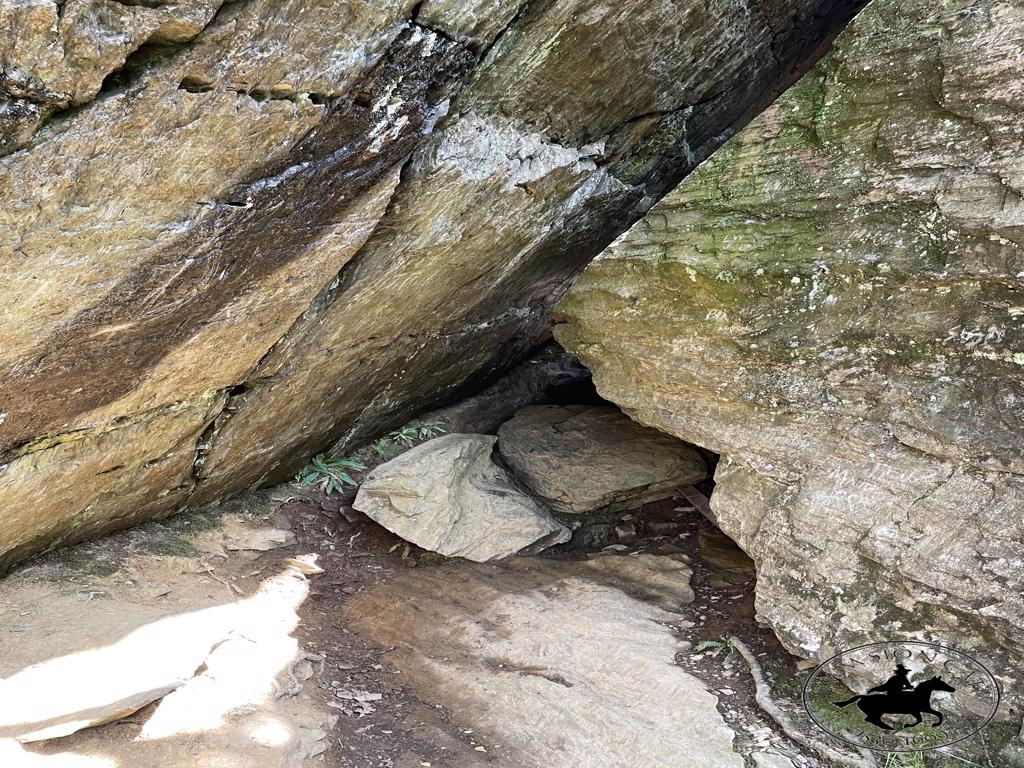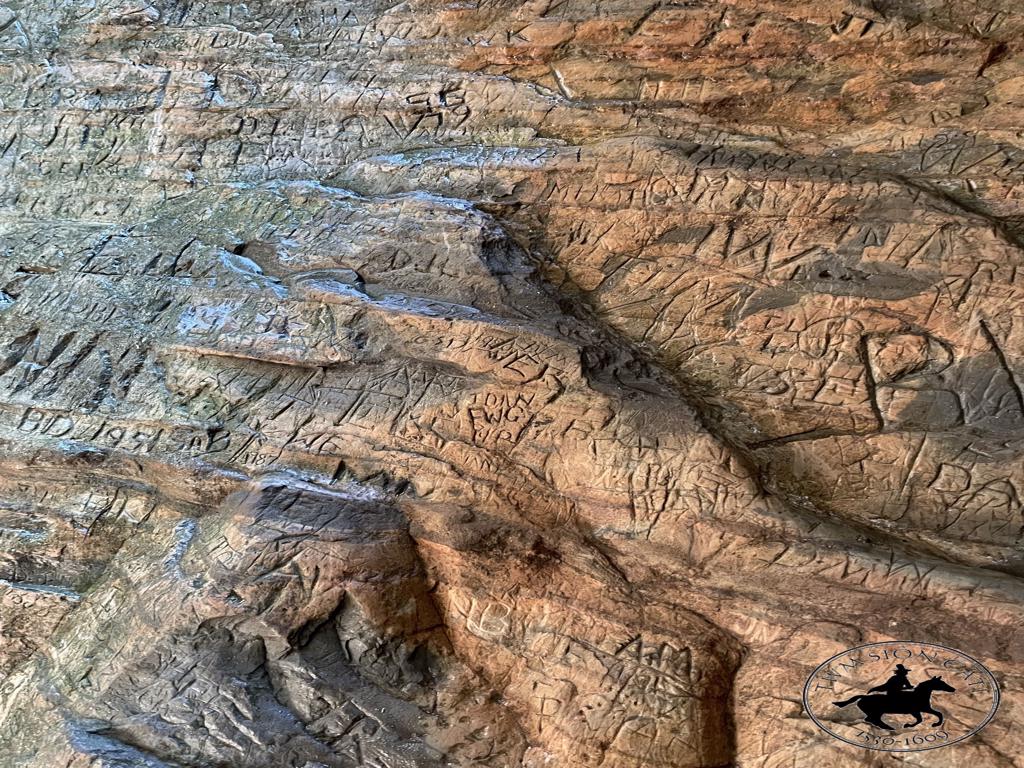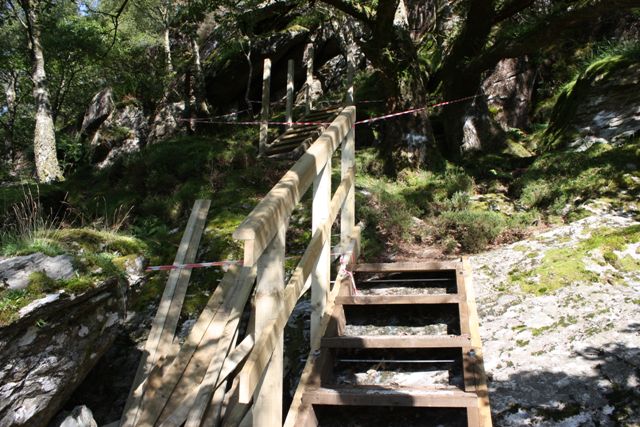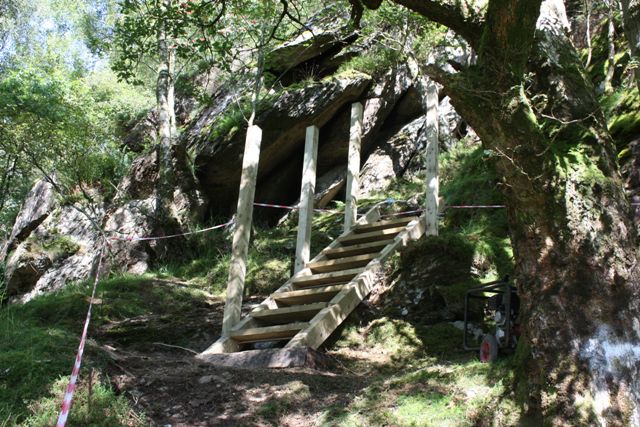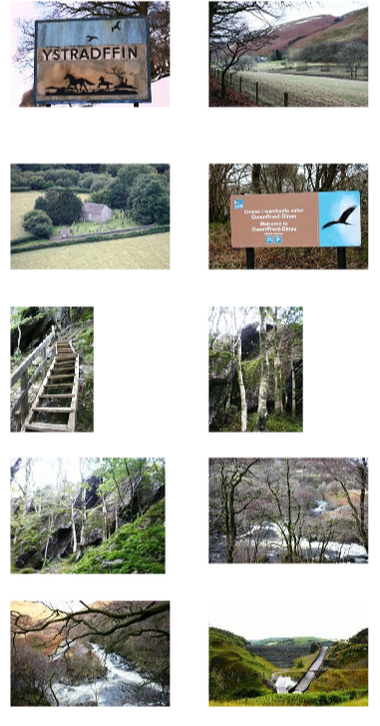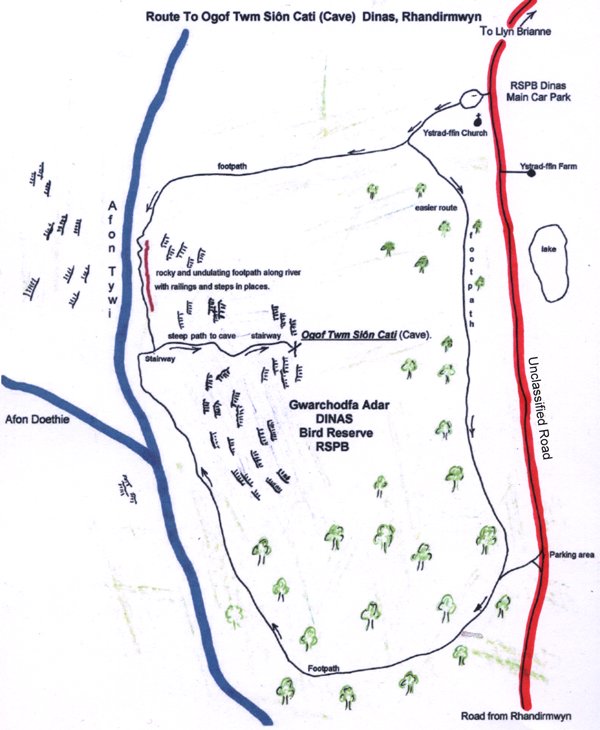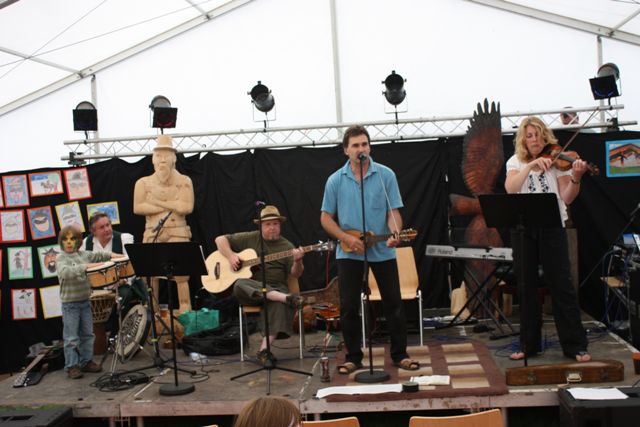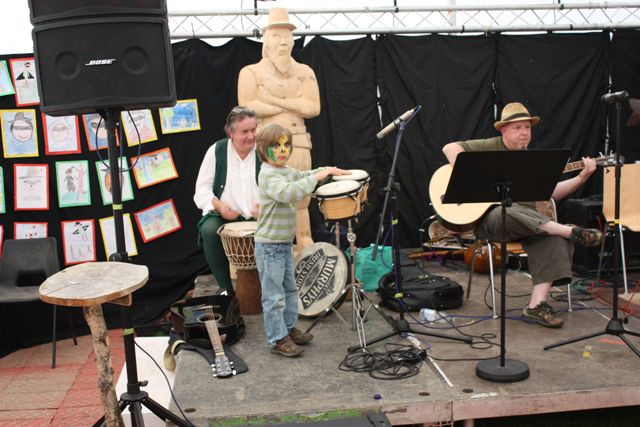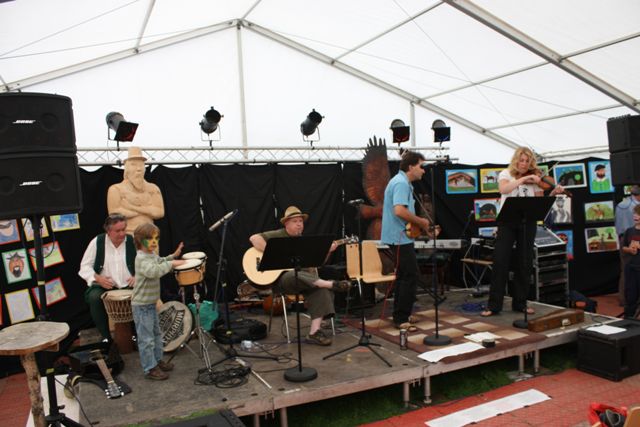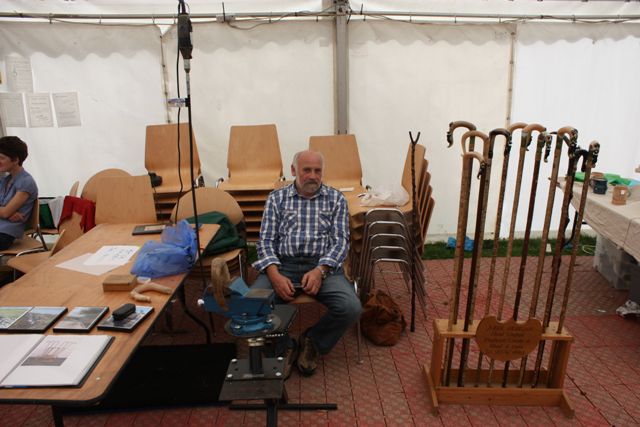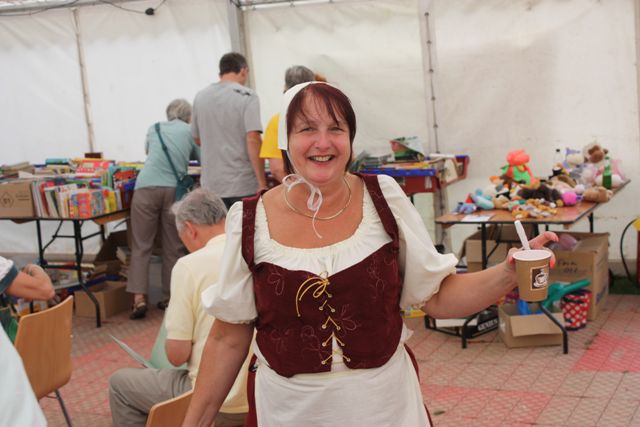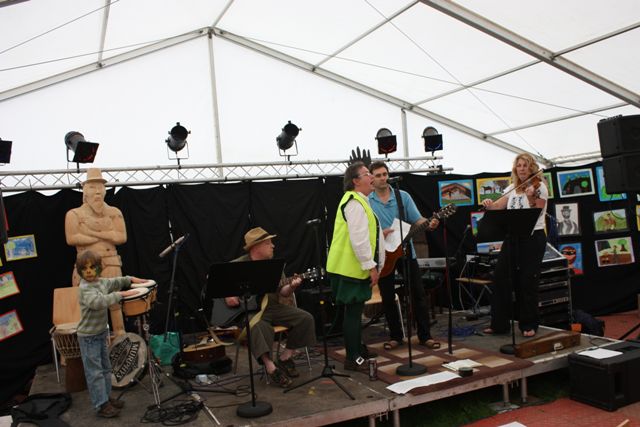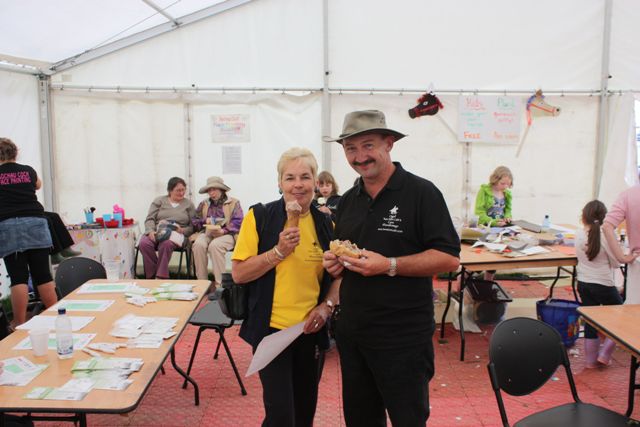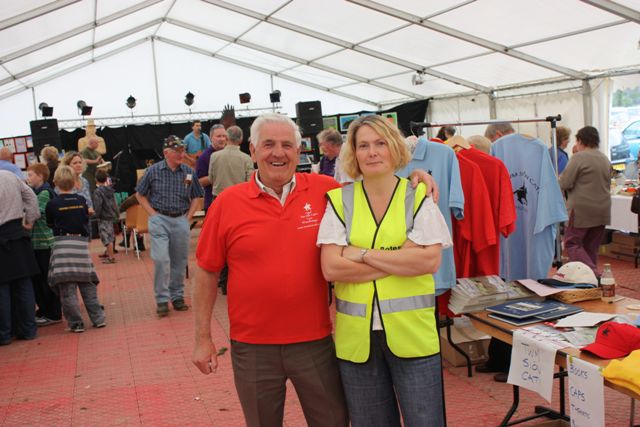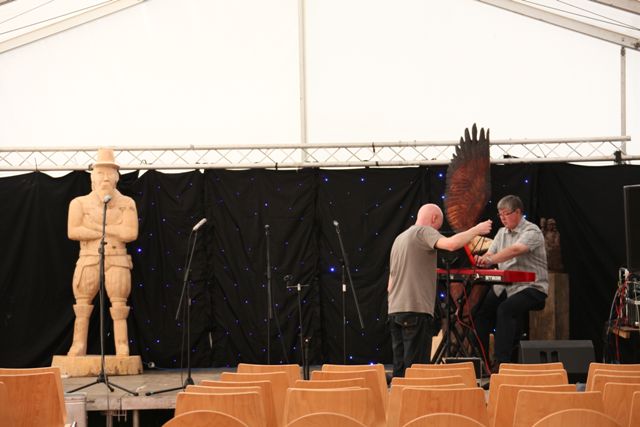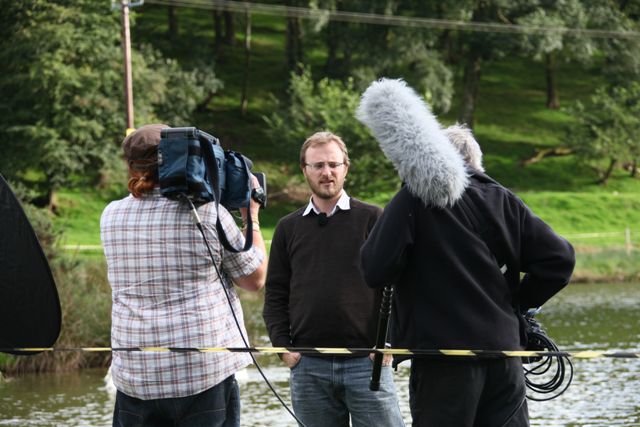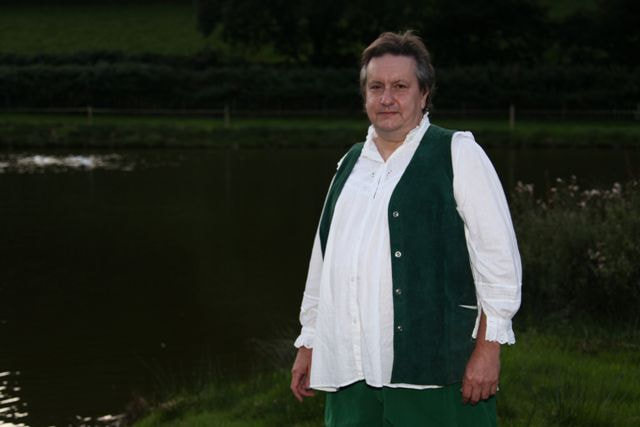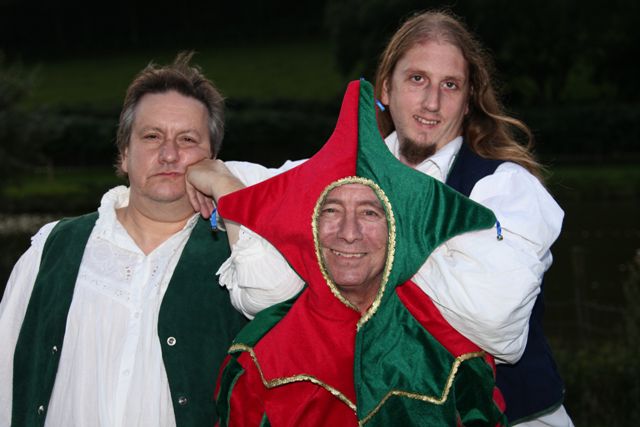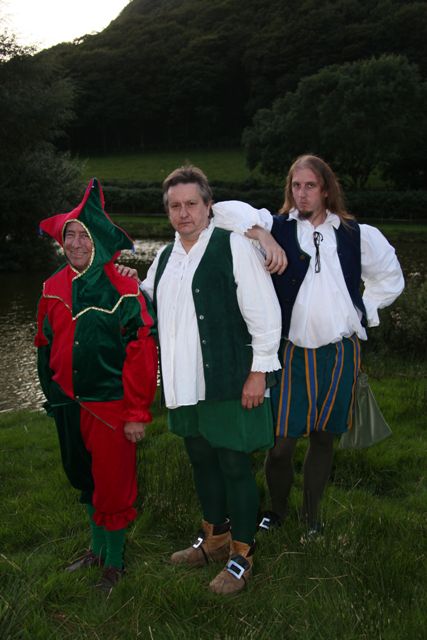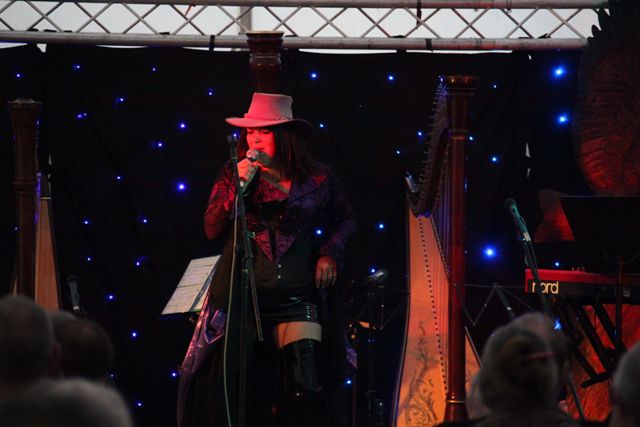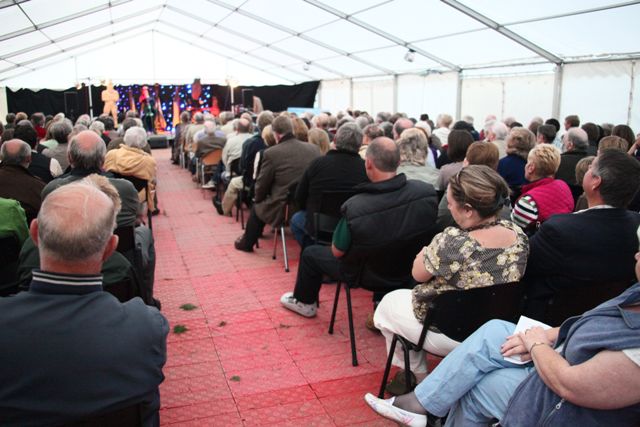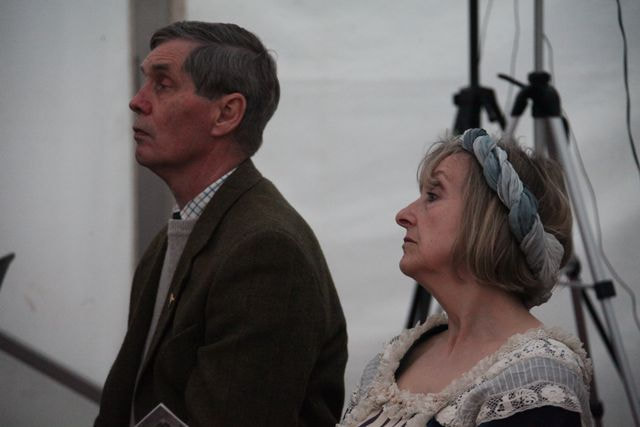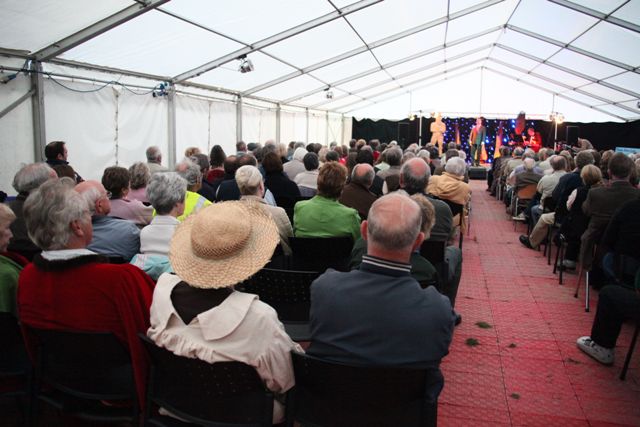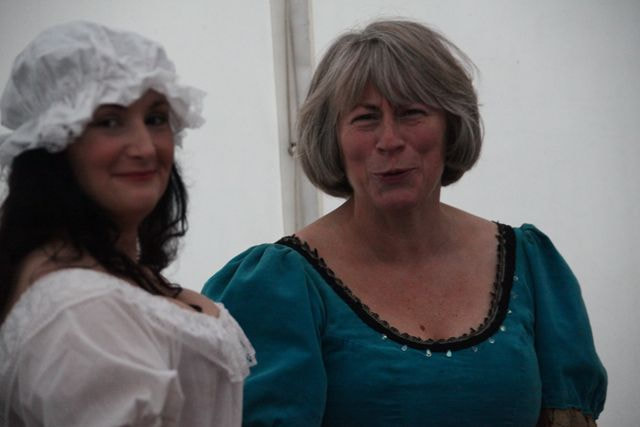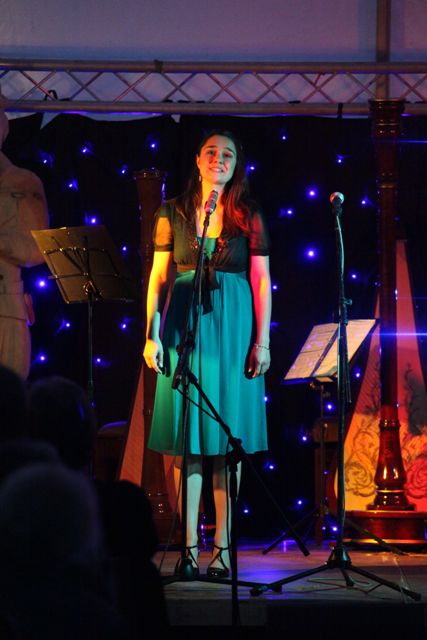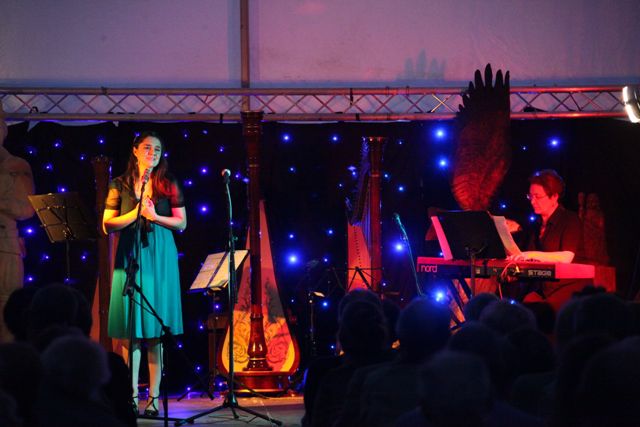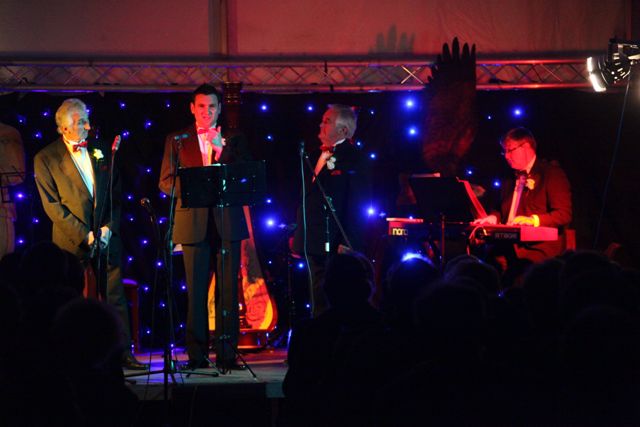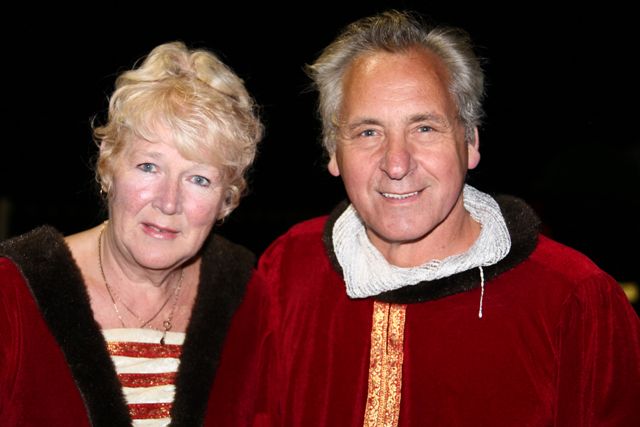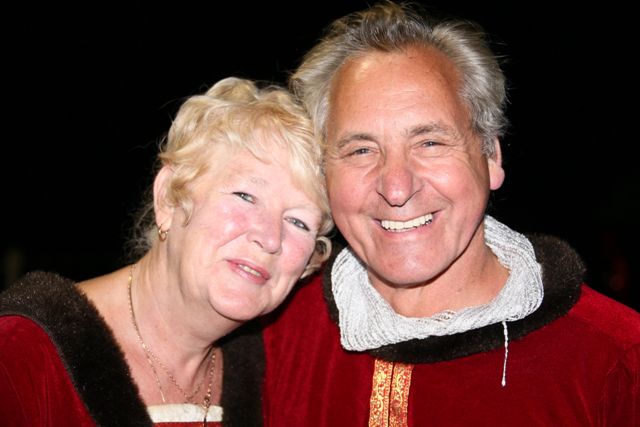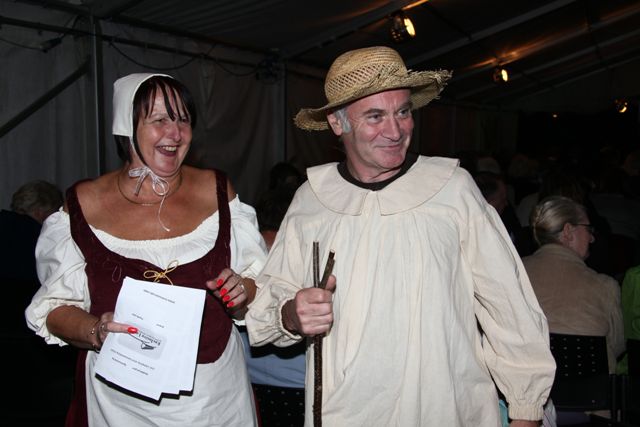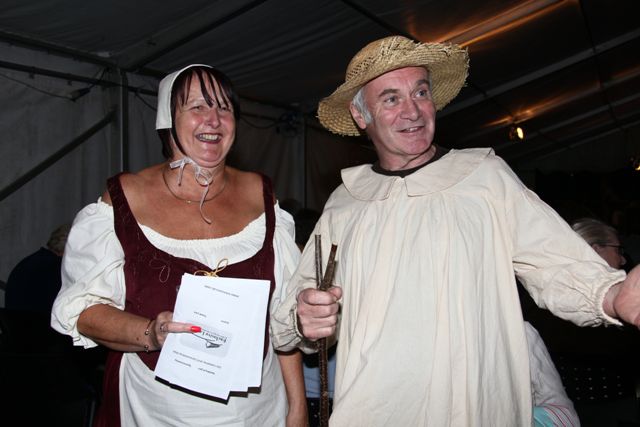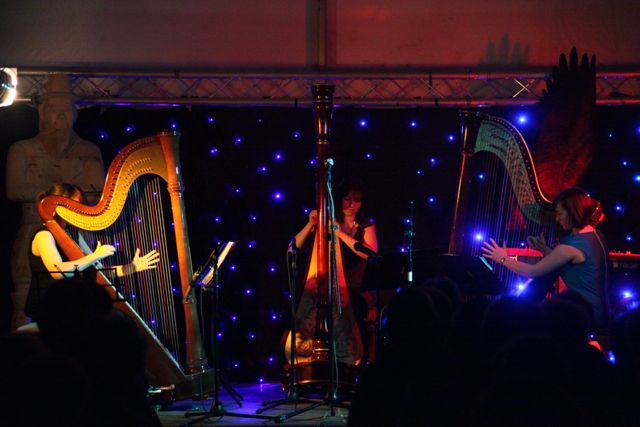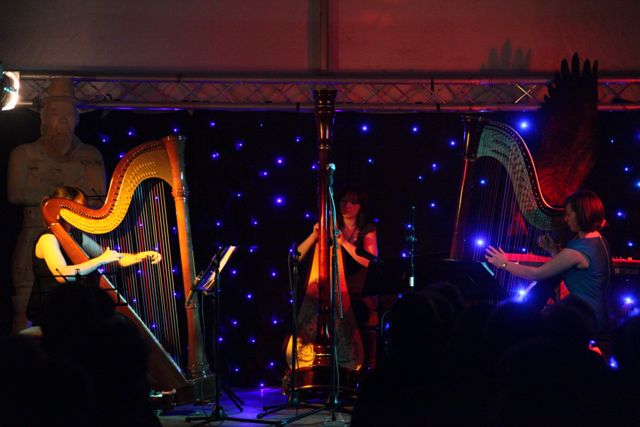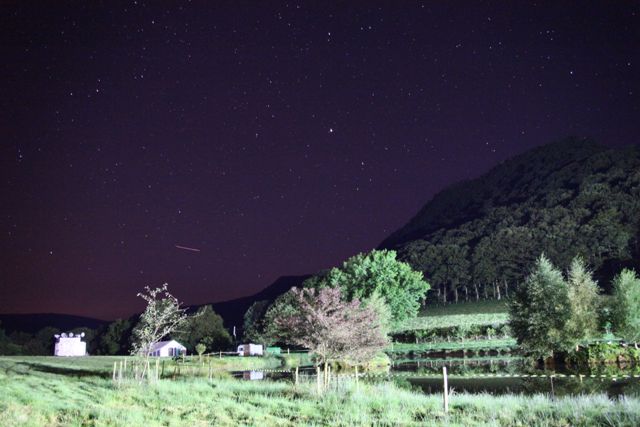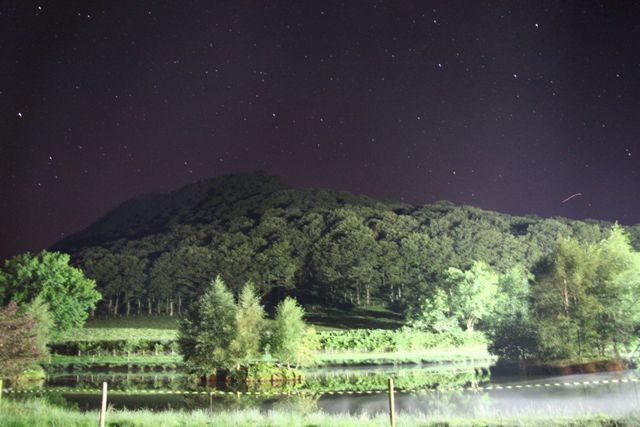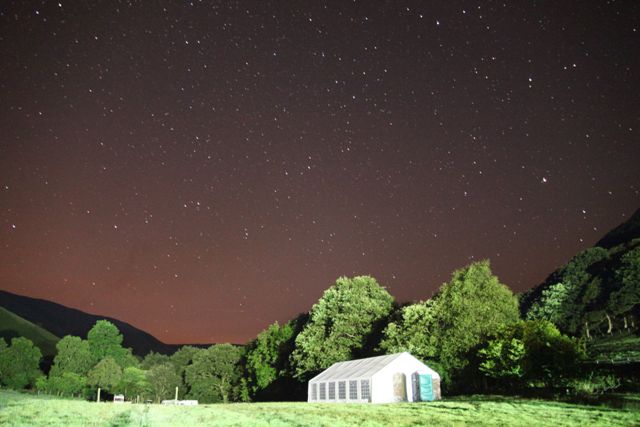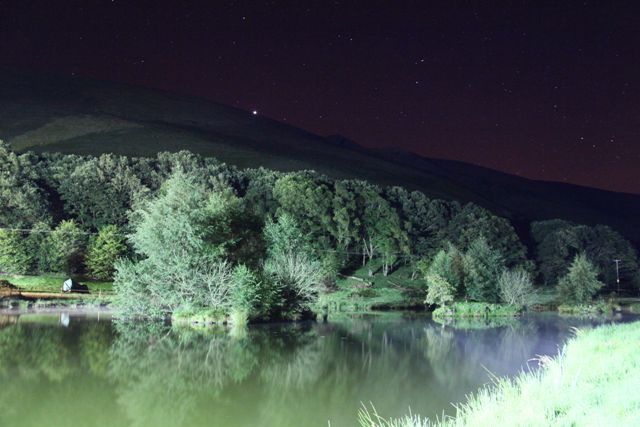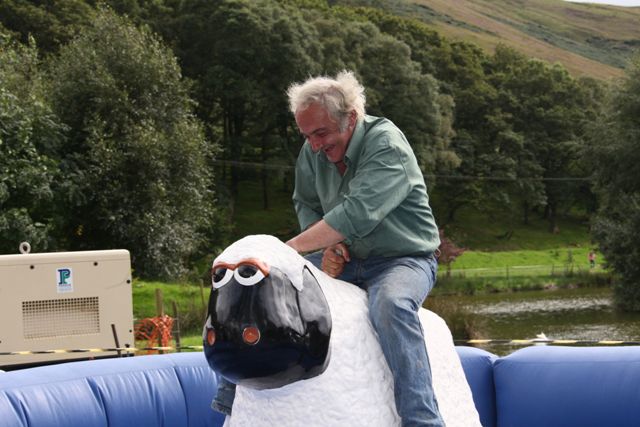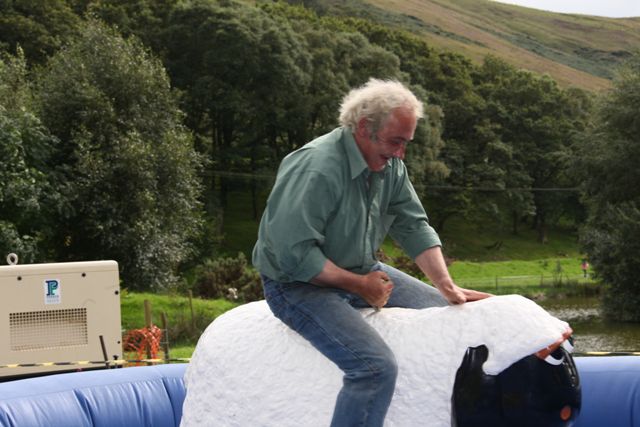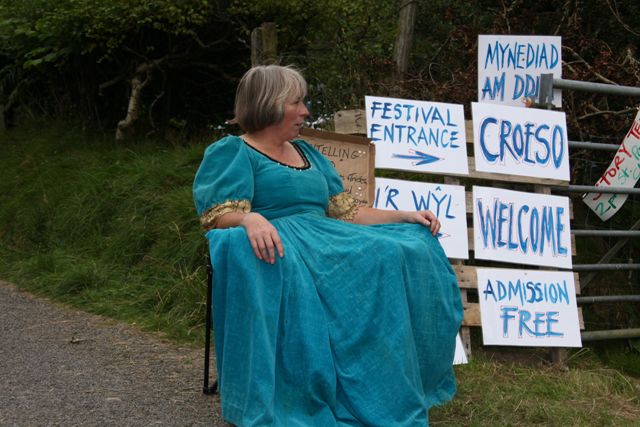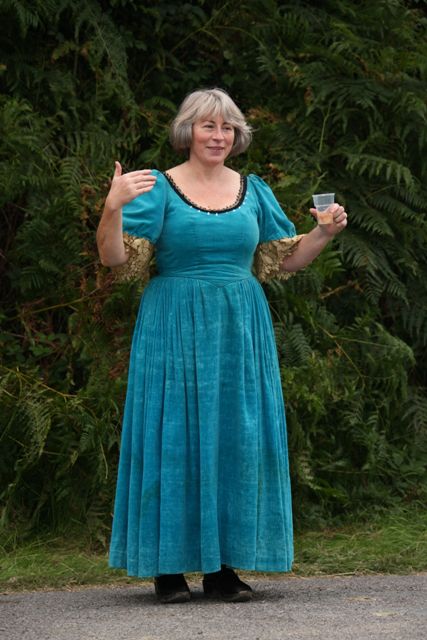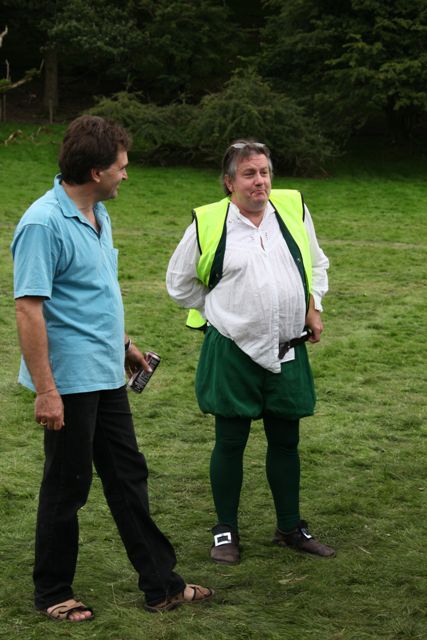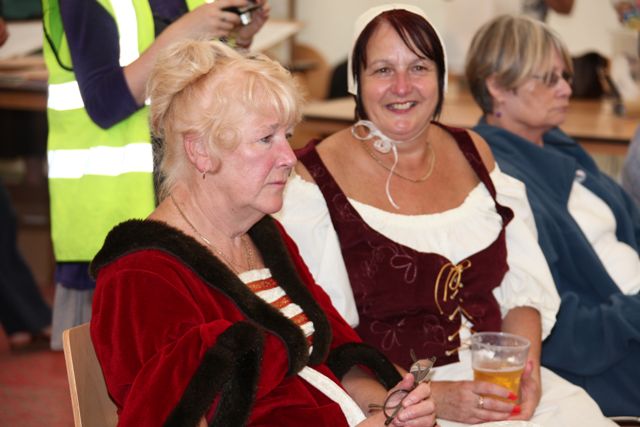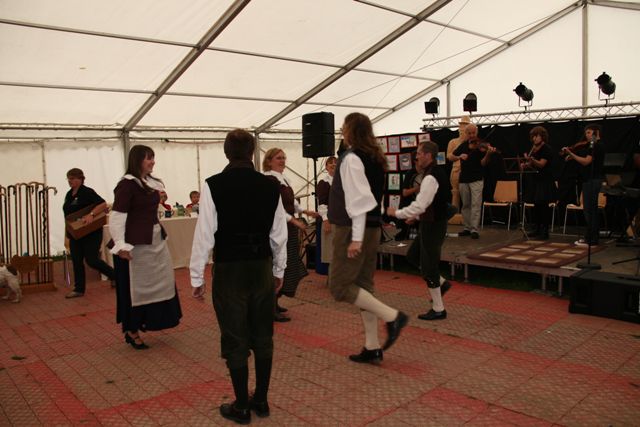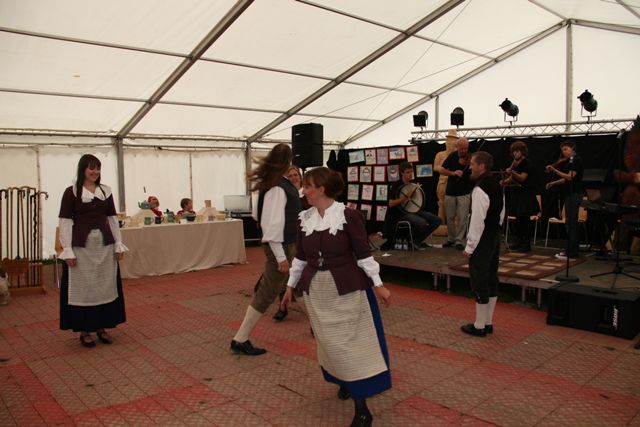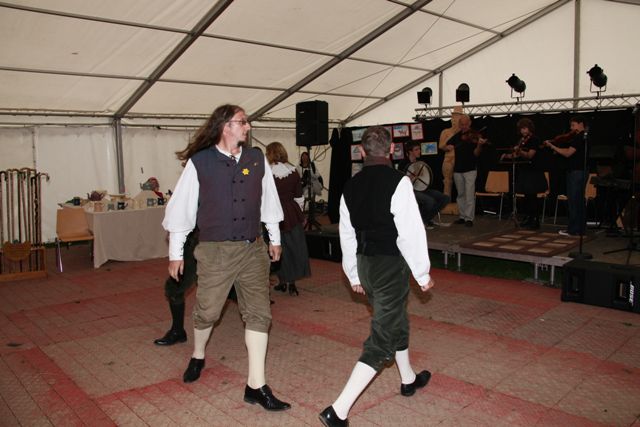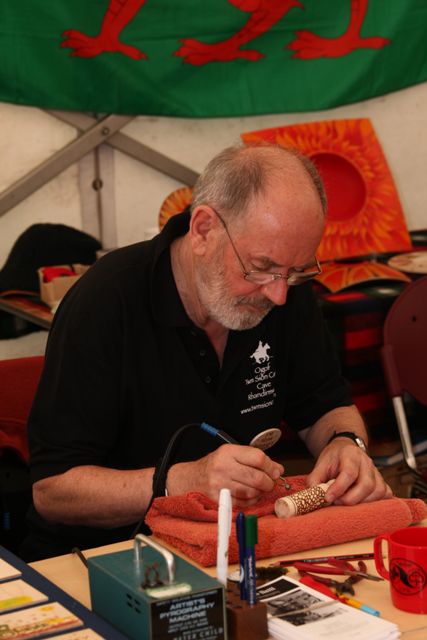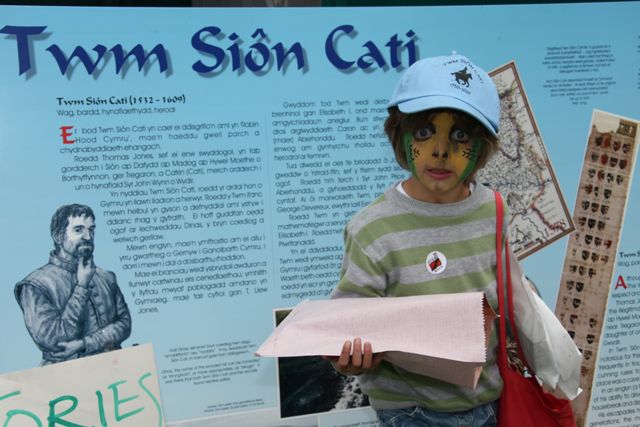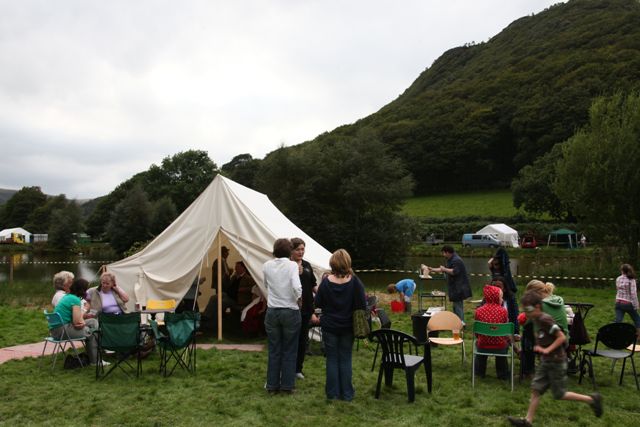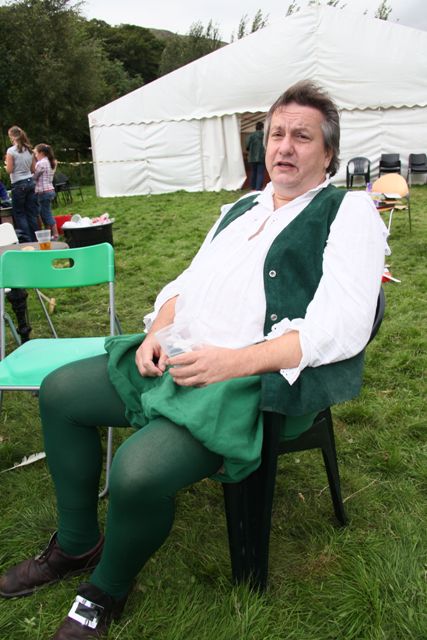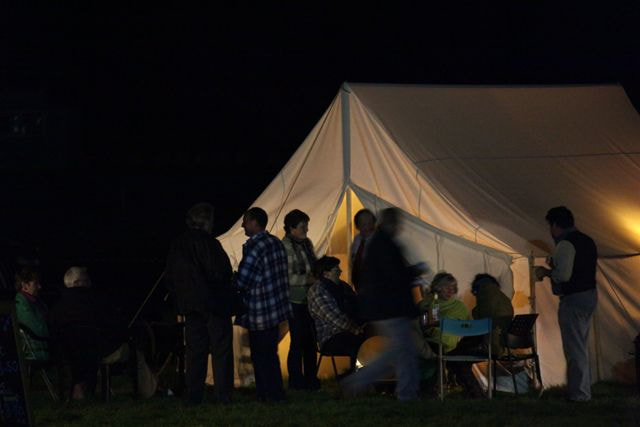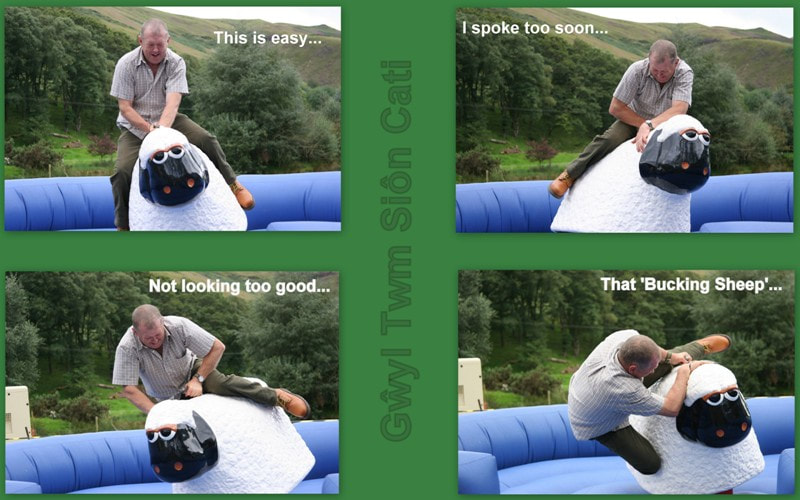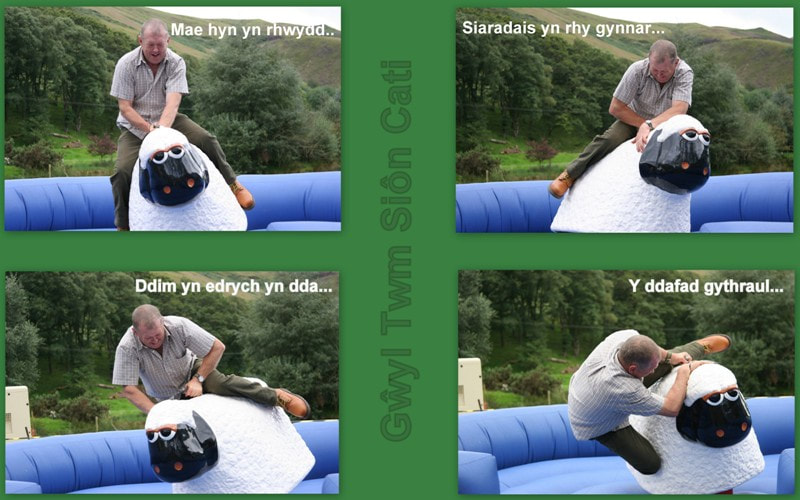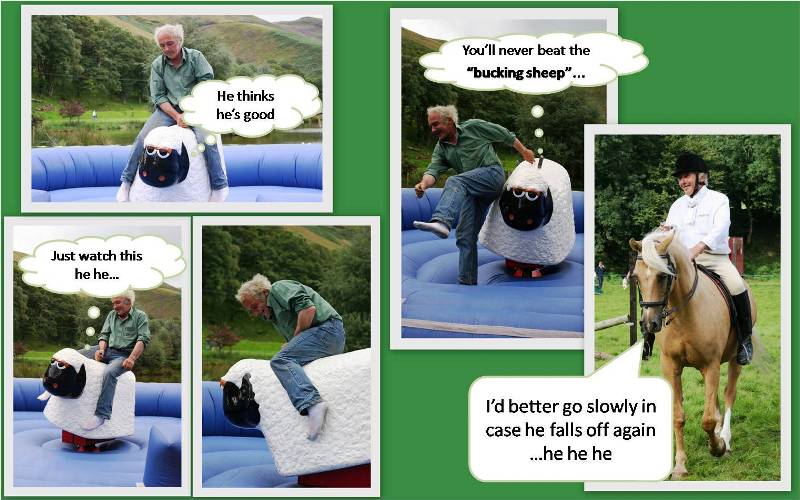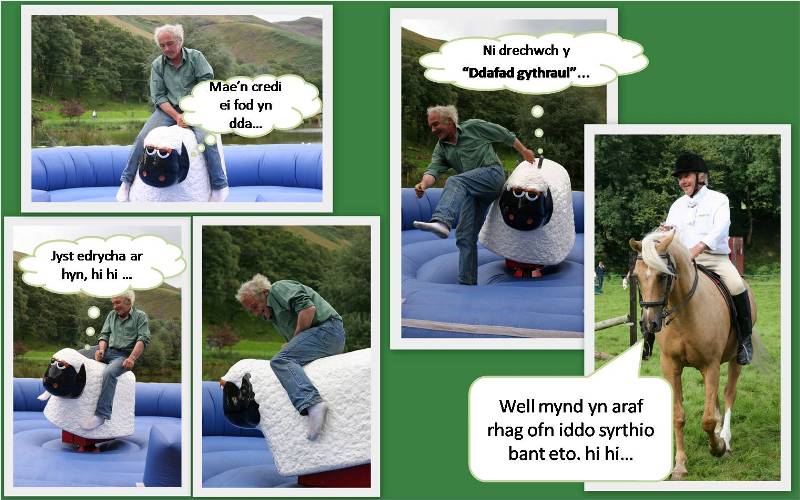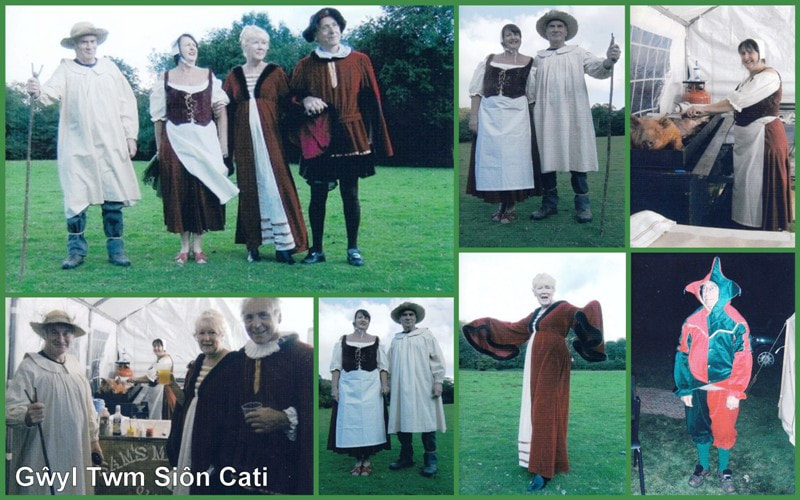Twm Siôn Cati 1530 - 1609
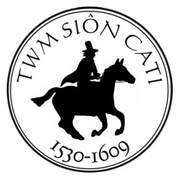
This site was set up to commemorate the life of Thomas Jones alias Twm Sion Cati. He is a legendary figure in Welsh History and had a close association with Rhandirmwyn and the Upper Tywi Valley. He was born in Tregaron in about 1530 but legend has it that he hid in a location near to Ystradffin Farm, Rhandirmwyn which has become known as Twm Sion Cati’s cave. Much has been written about his exploits and it is hoped that this website will clarify the facts and the myths about him. In the latter years of his life he married Joan a widow who lived at Ystradffin Farm, Rhandirmwyn. He died in 1609

The hiding place of the man known as ‘The Welsh Robin Hood’ is set to become one of the major attractions of the upper Towy Valley.
Following major improvements to the footpath leading to Twm Siôn Cati’s Cave, high in the wooded hills above Rhandir-mwyn, Carmarthenshire County Council has erected special signs to direct visitors to the site.
In his younger days, Twm Siôn Cati, who was born in 1532 and died in 1609, was a wild and mischievous character who often went into hiding following daring exploits at the expense of the rich and noble.
He was also a fervent Protestant, who fled to Geneva to escape persecution by the Catholic Queen Mary, and returned to Wales to be granted a royal pardon by Elizabeth I.
He counted the Royal Astrologer John Dee and the Welsh Protestant martyr John Penry among his friends.
He turned to poetry and became an accomplished heraldic bard. Towards the end of his life, he married Joan, a wealthy widow who lived at nearby Ystrad-ffin.
The cave once attracted thousands of visitors annually, and dozens of names have been carved in the rock.
The earliest carving dates from the beginning of the eighteenth century, but there are probably earlier examples hidden under the moss and lichen.
Among the names are those of members of the Pembrokeshire Yeomanry who travelled to the cave on horseback just before World War I and carved their names with bayonets.
Alun Jones, the prime instigator of the Twm Sôn Cati revival campaign, said: “It was a shame that many of the people who flocked every year to Rhandir-mwyn to see the Llyn Brianne reservoir and the red kite, probably didn’t know about Twm Siôn Cati and his cave.
“The signs will certainly help to give Twm the recognition and respect that he deserves.
"The next step will be the erection of an information board and a wooden statue in the vicinity of the cave.”
Local Plaid Cymru County Councillor Handel Davies, who has been instrumental in procuring the new signs, added: “Although Twm Siôn Cati has been the subject of numerous books, in English and Welsh, and a BBC television series, he is not as well-known as he should be.
“Hopefully the erection of the signs and the restoration of the path will draw the visitors here again so that they can pay homage to one the great iconic characters of Wales.”
https://www.southwalesguardian.co.uk/news/17231450.pointing-the-way-to-twm-sion-catis-cave/
Following major improvements to the footpath leading to Twm Siôn Cati’s Cave, high in the wooded hills above Rhandir-mwyn, Carmarthenshire County Council has erected special signs to direct visitors to the site.
In his younger days, Twm Siôn Cati, who was born in 1532 and died in 1609, was a wild and mischievous character who often went into hiding following daring exploits at the expense of the rich and noble.
He was also a fervent Protestant, who fled to Geneva to escape persecution by the Catholic Queen Mary, and returned to Wales to be granted a royal pardon by Elizabeth I.
He counted the Royal Astrologer John Dee and the Welsh Protestant martyr John Penry among his friends.
He turned to poetry and became an accomplished heraldic bard. Towards the end of his life, he married Joan, a wealthy widow who lived at nearby Ystrad-ffin.
The cave once attracted thousands of visitors annually, and dozens of names have been carved in the rock.
The earliest carving dates from the beginning of the eighteenth century, but there are probably earlier examples hidden under the moss and lichen.
Among the names are those of members of the Pembrokeshire Yeomanry who travelled to the cave on horseback just before World War I and carved their names with bayonets.
Alun Jones, the prime instigator of the Twm Sôn Cati revival campaign, said: “It was a shame that many of the people who flocked every year to Rhandir-mwyn to see the Llyn Brianne reservoir and the red kite, probably didn’t know about Twm Siôn Cati and his cave.
“The signs will certainly help to give Twm the recognition and respect that he deserves.
"The next step will be the erection of an information board and a wooden statue in the vicinity of the cave.”
Local Plaid Cymru County Councillor Handel Davies, who has been instrumental in procuring the new signs, added: “Although Twm Siôn Cati has been the subject of numerous books, in English and Welsh, and a BBC television series, he is not as well-known as he should be.
“Hopefully the erection of the signs and the restoration of the path will draw the visitors here again so that they can pay homage to one the great iconic characters of Wales.”
https://www.southwalesguardian.co.uk/news/17231450.pointing-the-way-to-twm-sion-catis-cave/
The Story
Brief History of Twm Siôn Cati
Although commonly referred to as ‘The Welsh Robin Hood, Twm Siôn Cati (c1530-1609) deserves better respect. He was of noble blood, a poet and a heraldic bard of renown. Many of the escapades attributed to him probably flowed from the imagination of various novelists.
According to recent research, it is possible that he hid in the famous cave at Rhandir-mwyn to escape religious persecution rather than to avoid the wrath of people who had been tricked by him.
Thomas Jones, to give him his real name, was the illegitimate son of the squire of Porthyffynnon (Fountain Gate), near Tregaron, and Catherine (Cati), the illegitimate daughter of one of the ancestors of Syr John Wynn of Gwydir.
Although commonly referred to as ‘The Welsh Robin Hood, Twm Siôn Cati (c1530-1609) deserves better respect. He was of noble blood, a poet and a heraldic bard of renown. Many of the escapades attributed to him probably flowed from the imagination of various novelists.
According to recent research, it is possible that he hid in the famous cave at Rhandir-mwyn to escape religious persecution rather than to avoid the wrath of people who had been tricked by him.
Thomas Jones, to give him his real name, was the illegitimate son of the squire of Porthyffynnon (Fountain Gate), near Tregaron, and Catherine (Cati), the illegitimate daughter of one of the ancestors of Syr John Wynn of Gwydir.
We know that Twm received a pardon from Elizabeth I, but the exact circumstances are unclear. We also know that he served as a steward for the lordship of Caron..
Towards the end of his life, he married Joan, the widow of Ystrad-ffin. She was the daughter of Sir John Price of Brecon, who published the first book in the Welsh language.
Various tales about Twm Siôn Cati have abounded since 1763; the most influential book was The Adventures and Vagaries of Twm Shon Cati by T.J. Llewelyn Prichard, published in 1828. Numerous books about him have been published since then, including a series of cartoons reproduced from The Western Mail in the 1950s. And the television series, Hawkmoor, produced in 1977, was based on Twm’s adventures.
Outing to Twm Shon Catti’s Cave
On Tuesday, 22nd inst. the members of Pantycelyn Memorial Chapel, together with the Sunday School and choir, went for their annual outing to ‘Twm Shon Catti’s Cave’, a well-known pleasant resort. they were conveyed there in about fifteen vehicles, being about 140 in number. The trip was greatly enjoyed, the excursionists returning about nine o’clock, having spent the happiest day possible.
The Welshman, Friday, 30 June 1893. p6. c4
Towards the end of his life, he married Joan, the widow of Ystrad-ffin. She was the daughter of Sir John Price of Brecon, who published the first book in the Welsh language.
Various tales about Twm Siôn Cati have abounded since 1763; the most influential book was The Adventures and Vagaries of Twm Shon Cati by T.J. Llewelyn Prichard, published in 1828. Numerous books about him have been published since then, including a series of cartoons reproduced from The Western Mail in the 1950s. And the television series, Hawkmoor, produced in 1977, was based on Twm’s adventures.
Outing to Twm Shon Catti’s Cave
On Tuesday, 22nd inst. the members of Pantycelyn Memorial Chapel, together with the Sunday School and choir, went for their annual outing to ‘Twm Shon Catti’s Cave’, a well-known pleasant resort. they were conveyed there in about fifteen vehicles, being about 140 in number. The trip was greatly enjoyed, the excursionists returning about nine o’clock, having spent the happiest day possible.
The Welshman, Friday, 30 June 1893. p6. c4
Fact from Fiction
|
The legend of Twm Siôn Cati lived on in the oral tradition in Wales for 200 years before being written down by Meyrick in the early nineteenth century. There exists his will, his genealogies, his poetry scattered through different manuscripts, his pardon in five aliases under Great Seal 1559 and an account of his conflict with Vicar Morgan Davyd of Tregaron in the reports of the Court of Star Chamber around 1600. The ruins of Fountaingate are still visible beside the Tregaron-Abergwesyn road a mile outside the town. Ystradffin, with an eighteenth-century façade, still stands and Abbey House, Strata Florida, is much as it was. Twm Siôn Cati’s cave near Ystradffin, Rhandirmwyn, Carmarthenshire, is popular with tourists. It is hidden in an R.S.P.B. nature reserve. The kite still flies there. The lair up on Hawkmoor is impossible to find, except perhaps by a blind harpist.
Born in 1530, illegitimate son of a descendant of the Gwaethfod family, Princes of Cardiganshire, who had distinguished literary traditions, Thomas Jones died in 1609. He was a gentleman farmer and genealogist. Siôn Dafydd Rhys, a contemporary scholar, described him as the finest Herald Bard of his day. He won the chair at Llandaff Eisteddfod in 1561. He was a notorious outlaw. He lived many lives. His fellow bards and poets describe him as a womanizer, an unsuccessful one like Dafydd ap Gwilym. He was married twice, and had legitimate as well as illegitimate issue, two sons John and Rees (a base son, John Moythe) and a daughter Margaret, who married Griffith David (Davyd?). He married Johane Williams Ystradffin within a month of her husband, Thomas Williams’s death, September 1607. He was then seventy-seven years of age. He soon busied himself with forging Thomas Williams’s will in his wife’s favour, though she had been left £200 per annum and property worth £3,000, a considerable sum of money! |
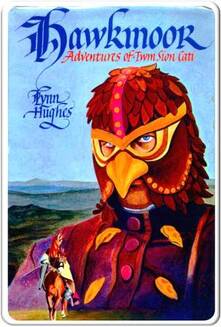
Johane remarried soon after Thomas Jones’s death an uncle of the beheaded Earl of Essex, Sir George Devereaux of Llwynybrain near Llandovery. It must not be viewed as hasty marriage in either case. Rich widows and heiresses were targets for abductors in those strange times.
Twm Siôn Cati still lives on the West Wales countryside. Glimpses of him are to be seen roguing with Shanco, Rhys and the others in the fairs and markets, wickedly drinking in the taverns till all hours. Sometimes, far off on a hillside calling his dogs, a jaunty figure, or on a wet November night in some by-lane, a smiling tricky face: Twm Siôn Cati.
Extract from ‘HAWKMOOR Adventures of Twm Siôn Cati’ - by kind permission of the author Mr. Lynn Hughes.
Twm Siôn Cati still lives on the West Wales countryside. Glimpses of him are to be seen roguing with Shanco, Rhys and the others in the fairs and markets, wickedly drinking in the taverns till all hours. Sometimes, far off on a hillside calling his dogs, a jaunty figure, or on a wet November night in some by-lane, a smiling tricky face: Twm Siôn Cati.
Extract from ‘HAWKMOOR Adventures of Twm Siôn Cati’ - by kind permission of the author Mr. Lynn Hughes.
Dinas Reserve
R S P B Gwenffrwd Dinas Reserve, Rhandirmwyn
The meaning of the name Dinas is fortress or stronghold. This conical shaped hill may well have been inhabited at some time as its top is reasonably flat and would have been an easy location to defend.
Dinas became a R S P B reserve in the 1960’s when the majestic Red Kite was nesting there in the beautiful oak woods which cover virtually the whole site. At that time there were only a small number left and the upper Tywi valley was their only safe haven in the whole of Britain. The kites are still here and can regularly be seen gliding gracefully through the valley. In my view this is the only place to see them, in their true home.
The reserve is located north of the village of Rhandirmwyn - follow the main road for three miles and you are there. It is clearly signposted from Llandovery turn off the A483 near the fire station – follow the brown signs.
There is a car park and information board at Nanty-y-ffin which is a small 18th century cottage (not open to the public). There are picnic facilities here so you can have a bite to eat whilst planning your walk.
The reserve is bounded on its northern side by the river Tywi which cascades down over the Cerrig Tywi Falls. The scenery is breathtaking. Look out for Dippers, Wagtails and a host of other native birds as well as Ravens that continually call from the rocks on the hillside opposite. Their calls echo through the valley.
The reserve is well known for summer-visiting pied flycatchers, redstarts, wood warblers and tree pipits and in the spring there are Bluebells – a wonderful sight.
The walk around Dinas is about two miles and is difficult in places. Not recommended for those with mobility problems – especially along the river side. The RSPB have carried out footpath construction/improvements but due to the terrain there is a limit to what can be done. Work is still ongoing to make sure the footpath is as safe as is humanly possible.
Other locations to visit nearby include the Llyn Brianne Reservoir and Capel Peulin, Ystradffin which dates from the 12th century.
The meaning of the name Dinas is fortress or stronghold. This conical shaped hill may well have been inhabited at some time as its top is reasonably flat and would have been an easy location to defend.
Dinas became a R S P B reserve in the 1960’s when the majestic Red Kite was nesting there in the beautiful oak woods which cover virtually the whole site. At that time there were only a small number left and the upper Tywi valley was their only safe haven in the whole of Britain. The kites are still here and can regularly be seen gliding gracefully through the valley. In my view this is the only place to see them, in their true home.
The reserve is located north of the village of Rhandirmwyn - follow the main road for three miles and you are there. It is clearly signposted from Llandovery turn off the A483 near the fire station – follow the brown signs.
There is a car park and information board at Nanty-y-ffin which is a small 18th century cottage (not open to the public). There are picnic facilities here so you can have a bite to eat whilst planning your walk.
The reserve is bounded on its northern side by the river Tywi which cascades down over the Cerrig Tywi Falls. The scenery is breathtaking. Look out for Dippers, Wagtails and a host of other native birds as well as Ravens that continually call from the rocks on the hillside opposite. Their calls echo through the valley.
The reserve is well known for summer-visiting pied flycatchers, redstarts, wood warblers and tree pipits and in the spring there are Bluebells – a wonderful sight.
The walk around Dinas is about two miles and is difficult in places. Not recommended for those with mobility problems – especially along the river side. The RSPB have carried out footpath construction/improvements but due to the terrain there is a limit to what can be done. Work is still ongoing to make sure the footpath is as safe as is humanly possible.
Other locations to visit nearby include the Llyn Brianne Reservoir and Capel Peulin, Ystradffin which dates from the 12th century.

Location: RSPB Gwenffrwd-dinas, Nr Ystradffin, Llandovery SA20 0PG
The Cave

These photographs, old and new, are of Twm Siôn Cati’s cave and the nearby Ystradffin Farm where Thomas Jones (Twm Siôn Cati) spent the last days of his life. The cave walls are, literally covered in graffiti where people over the centuries have carved their names or initials and often the year of their visit in the rock face. The oldest we have found dates from 1729. If you have photographs of your visit to the cave, please forward us a copy along with any details you wish to include. Many people have wonderful memories and stories of their visit to Ogof Twm Siôn Cati. Why not share them with others.
In 2009 a new stairway was erected by Carmarthenshire County Council which makes access up the hillside to the cave a lot easier.
In 2009 a new stairway was erected by Carmarthenshire County Council which makes access up the hillside to the cave a lot easier.
Location of the Cave
The Festival 2009
Gŵyl Twm Siôn Cati 21st - 23rd August 2009 was a great success. Please click on here and see photographs and video footage from the festival. We are very grateful to all who participated and helped with the event.
Mr Geoffrey Jones, Ystrad-ffin Farm, Rhandirmwyn must be singled out for his generosity and patience in allowing us to use this most wonderful location to hold the festival. Diolch yn fawr iawn. Further photographs and information relating to the footpath and information board etc to follow soon
Mr Geoffrey Jones, Ystrad-ffin Farm, Rhandirmwyn must be singled out for his generosity and patience in allowing us to use this most wonderful location to hold the festival. Diolch yn fawr iawn. Further photographs and information relating to the footpath and information board etc to follow soon
Video By Steven Flett

Photos of the festival



